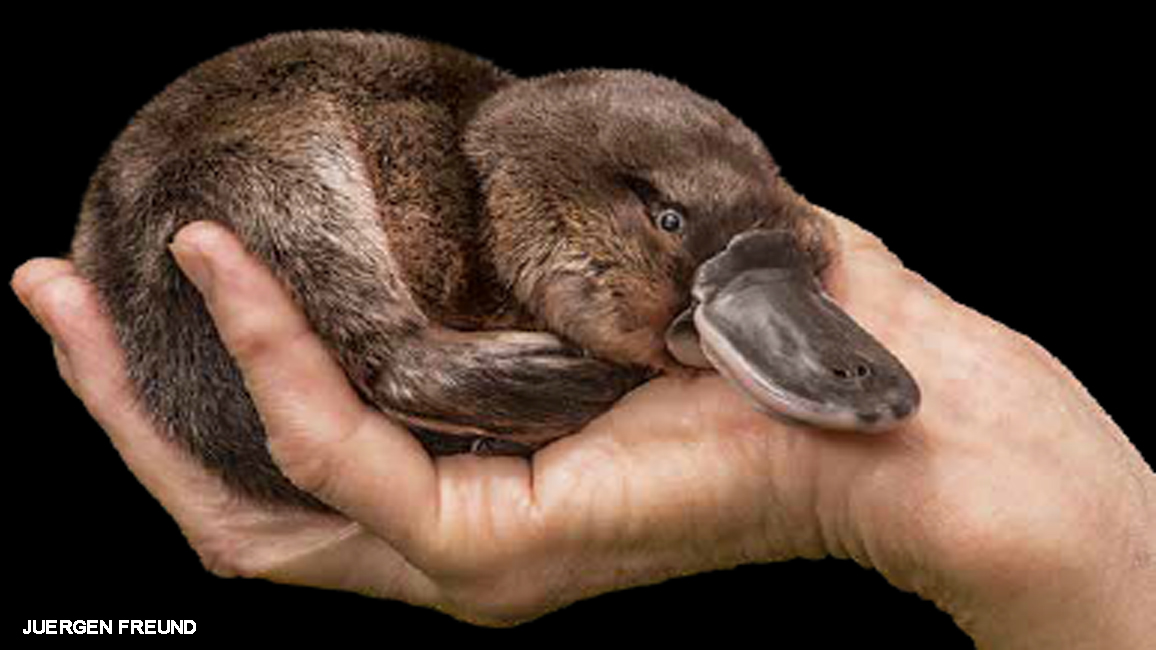
Peculiar Platypus
By Hannah SchardtThis famously funny-looking critter is one of Australia’s favorite mammals. But one look at its duck-like bill gives a hint that it doesn’t play by all the mammal rules!

More than 200 years ago, scientists in England received a strange delivery from Australia. It was an animal, but it was unlike any animal they’d ever seen. Its body looked like an otter’s. Yet on the front of its face, where you might expect a whiskery nose, was a bill that looked like a duck’s! The scientists were certain they were looking at a hoax.
But the animal was 100 percent real—and 100 percent unique. It was a platypus, a mammal that breaks a lot of rules. And its strange, mixed-up appearance is just the beginning!
VIDEO: WATCH PLAYFUL PLATYPUSES

MORE SURPRISES
Those long-ago scientists may have been shocked by the platypus’s odd looks. But some of the most surprising things about a platypus aren’t obvious at first glance.
Unlike almost every other mammal on Earth, a platypus mom doesn’t give birth to live babies. Deep inside a riverside burrow, she lays eggs—usually between one and three of them. (Another Australian animal called the echidna [uh-KID-nuh] is the only other egg-laying mammal.) The platy’s eggs are small and leathery—more like reptile eggs than bird eggs. When a baby platy hatches, it’s only the size of a lima bean and completely helpless. So Mama Platy keeps her babies safe inside the burrow for a few months while they eat and grow.
As all mammals do, a baby platy drinks milk from its mom. But here’s another way that platypuses break the rules: Their babies don’t nurse from nipples. Instead, the mama platypus oozes milk from special skin patches on her belly. Then her babies lap it up.
OUCH!
A male platypus also has a surprise up his sleeve—or, rather, on his hind legs. That’s where you’ll find sharp spurs that deliver a painful venom. Male platys use the spurs mostly when fighting with other males during mating season. In fact, for much of the year, the spurs put out no venom at all!
WATERY WORLD
On land, a platypus is slow and clumsy. But in the water, it’s as graceful as an otter. It paddles along with strong front legs and steers with its back legs and tail. Its ears, eyes, and nose stay shut tight to keep water out. A sensitive, rubbery bill helps it to feel along the river bottom for tasty worms, insects, and shellfish. The bill also has special skin cells that detect electrical signals put out by moving prey—a sort of “sixth sense”!

SAVE IT FOR LATER
Platypuses don’t chew their food with teeth. That’s because they have no teeth! Instead, they stuff prey into cheek pouches and return to the water’s surface. There they float along, using hard, flat ridges in their bills to grind the food into mush.
PROTECT THE PLATYS!
Until about 100 years ago, platypuses were hunted for their soft fur. Some streams where platys once lived were destroyed when people moved in nearby.
And even today, many platys die after getting accidentally caught in fishing nets. (A platypus can stay underwater for only a few minutes before it drowns.) But people are working to protect the platypus. They are fixing up and protecting the rivers and streams where it lives. And they’re encouraging people to use safer fishing nets.
Scientists also study platypuses in the wild to learn more about how they spend their time. They want to make sure these adorable oddballs have all they need to keep surviving—and breaking the rules—for many years to come.
















